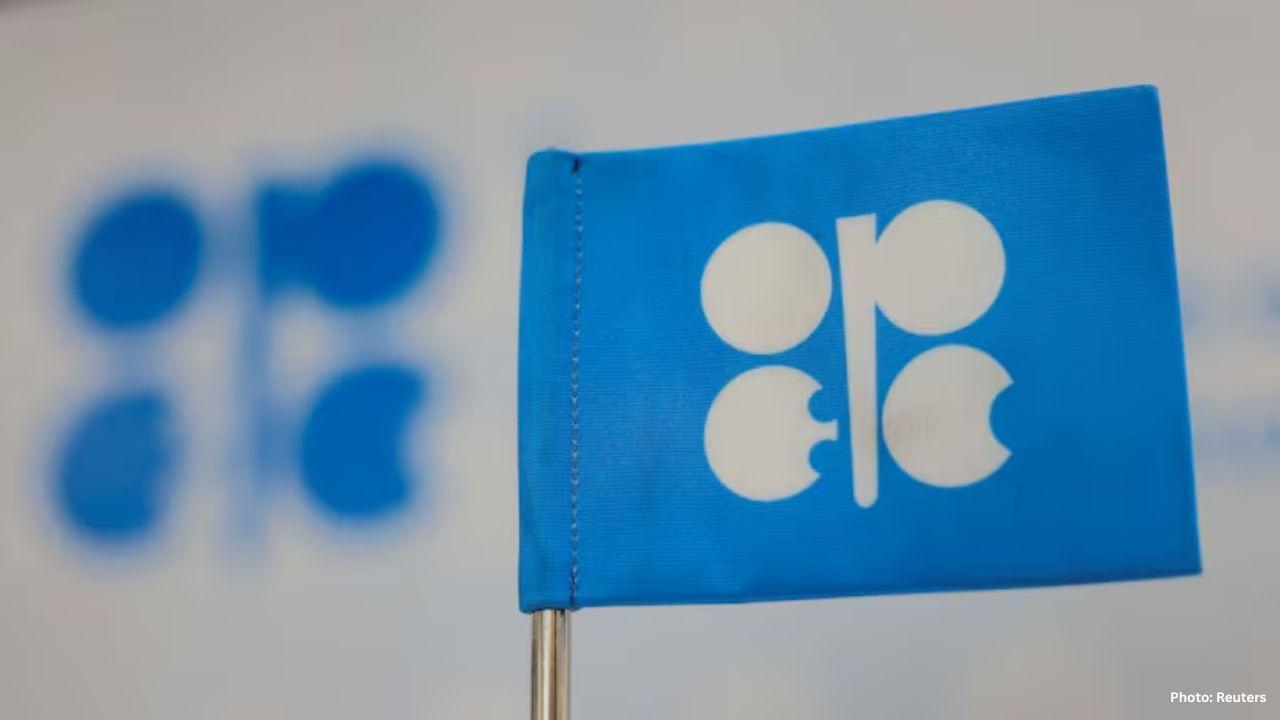
Post by : Monika
On October 7, 2025, OPEC+, the alliance of oil-producing nations including OPEC members and allies like Russia, announced a modest increase of 137,000 barrels per day (bpd) in oil production for November. This decision reflects a careful approach to managing global oil supplies amid ongoing concerns about oversupply and fluctuating demand.
Recently, oil prices fell below $65 per barrel, down from highs near $82 earlier in 2025. Analysts attribute this drop to factors including increased production from some countries, weak demand in certain regions, and global economic uncertainty.
Geopolitical Tensions:
A recent drone attack on Russia’s Kirishi refinery disrupted its CDU-6 unit. The repairs are expected to take about a month.
Any disruption in major oil-producing regions can limit supply and push prices higher.
Economic Factors:
Trade policies, especially U.S. tariffs, affect global economic growth and oil demand.
Slowdowns in major economies reduce demand for energy, which can put downward pressure on prices.
Supply and Storage Levels:
Even small changes in oil production or inventory levels can influence global pricing.
Analysts watch storage data closely to predict potential oversupply or shortages.
Market Reactions to OPEC+ Decision
Traders and investors reacted cautiously to OPEC+’s announcement:
The modest output increase reassured markets that OPEC+ is avoiding an oversupply situation.
Oil prices rose slightly, indicating market confidence that the supply-demand balance is being carefully managed.
Some analysts expected a larger output boost, but the measured increase signals caution, suggesting that OPEC+ is concerned about potential price drops if too much oil floods the market.
The overall sentiment in the oil market remains mixed, with supply concerns balanced against demand uncertainty and economic pressures.
Why OPEC+ is Proceeding Carefully
Several reasons explain why OPEC+ chose a cautious increase:
Global Demand Concerns:
Some countries are experiencing slower economic growth, which can reduce demand for oil.
Rising interest rates in key economies may also curb industrial activity, affecting fuel consumption.
Avoiding Price Collapse:
Excess supply could lead to falling oil prices, which would hurt revenue for oil-producing countries.
OPEC+ aims to maintain stable prices that are neither too high to depress global demand nor too low to reduce national income.
Geopolitical Instability:
Conflicts in regions like the Middle East or Russia’s oil infrastructure issues can disrupt supply.
Sudden changes in production could exacerbate market volatility.
By taking small, controlled steps in output, OPEC+ is managing risk while supporting oil prices and global market stability.
Recent Trends in Oil Markets
Oversupply Risks:
If other oil-producing countries increase output unexpectedly, supply could exceed demand.
A sudden supply glut may force OPEC+ to cut production later to stabilize prices.
Demand Uncertainty:
Global economic slowdowns or recessions could lower fuel consumption.
Energy efficiency measures and shifts toward renewable energy may also reduce oil demand over time.
Geopolitical Disruptions:
Conflicts, attacks on pipelines, or sanctions can limit oil availability.
These factors can cause sudden price spikes or shortages, impacting global economies.
Inventory Fluctuations:
Stock levels in major storage hubs affect market perception.
Rising inventories suggest oversupply, while low inventories indicate potential shortages.
Expert Opinions
Energy analysts have offered mixed views:
Future Outlook
Looking ahead, several trends are expected to influence oil markets:
Economic Recovery or Slowdown:
Strong growth in major economies could increase oil demand.
Economic slowdown may lead to lower consumption, affecting prices.
Policy Changes:
Changes in tariffs, energy policy, or subsidies can influence global demand and supply.
Governments promoting renewable energy may gradually reduce reliance on oil.
OPEC+ Decisions:
The alliance will continue monitoring markets and may adjust production monthly.
Their goal remains balancing supply with global demand while maintaining stable prices.
Geopolitical Events:
Conflicts, natural disasters, or attacks on oil facilities could create short-term supply shocks.
OPEC+’s decision to raise oil production by 137,000 barrels per day for November reflects a cautious approach in managing global oil supplies. This measured increase aims to balance supply and demand, stabilize prices, and minimize risks of a supply glut.
Oil prices responded positively, with Brent crude rising to $65.70 and WTI to $61.90, showing that markets appreciate OPEC+’s careful management. However, uncertainties remain due to geopolitical risks, economic fluctuations, and potential supply disruptions.
Analysts agree that continued vigilance and flexible production strategies will be essential for maintaining market stability. OPEC+ is expected to adjust output as needed, responding to global demand trends, geopolitical developments, and economic conditions.
while oil markets face challenges, OPEC+’s cautious approach demonstrates a commitment to balanced, stable, and predictable energy supply, benefiting producers, consumers, and the global economy.










NBA Friday Recap: Powerhouse Wins for Miami, LA, Milwaukee, and Clippers
Miami, LA Lakers, Milwaukee, and Clippers triumphed in a thrilling NBA Friday, showcasing standout p

Doncic Shines with 49 Points in Lakers' 128-110 Victory over Timberwolves
Luka Doncic dazzles with 49 points as the Lakers secure a 128-110 win against the Timberwolves, show

Kings Triumph Over Jazz 105-104 with Last-Minute Sabonis Effort
The Sacramento Kings edged out the Utah Jazz 105-104, with Domantas Sabonis making the decisive shot

Argentina's Friendly Match Against India Delayed, New Date to be Announced
The friendly match between Argentina and India in Kochi has been postponed due to FIFA approval dela

Rohit and Kohli Conclude ODI Journeys in Australia with a Victory
Rohit Sharma and Virat Kohli bid adieu to Australian ODIs with a final win, forming a 168-run partne

George Russell's Wrestling Mask Antics at Mexican Grand Prix
George Russell donned a wrestling mask to enjoy the Mexican Grand Prix from the stands, providing a